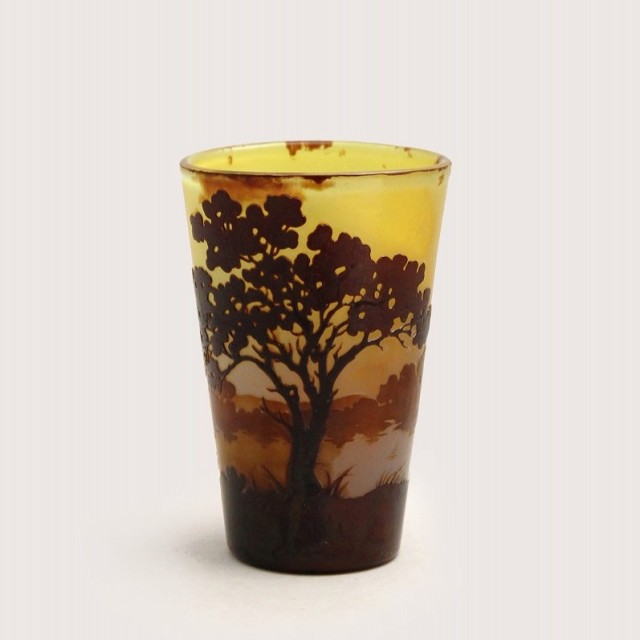
SOLD
D10.8cm×9cm H16.5cm
Emile Gallé was a glassworker who represented Art Nouveau, an artistic style that spread in Europe from the end of the 19th century to the early 20th century. In his garden, Galle cultivated a variety of plants, which he used as a botanical garden of 2,000 varieties. They were observed and referenced as motifs for his designs. Galle's work was also influenced by art from Egypt, the Middle East, Japan, and other Eastern countries. Galle's Japonisme was one element that he incorporated from his deep understanding of Japanese aesthetics over the years.
Emile Gallé
1846 - 1904
Emile Gallé was a representative of the “Art Nouveau” craft movement of the late 19th century. Born in his hometown of Nancy in eastern France, Galle worked in glass, ceramics, and wood furniture, and won international honors at the Paris Expositions of 1889 and 1900. In 1878, he exhibited at the Paris Exposition Universelle, winning the Bronze Prize for his moonlight-colored glass and ceramics, which he had developed himself (a material that was colored pale blue by cobalt oxide). In 1884, he exhibited his work at the “Stone, Wood, Clay, and Glass” exhibition organized by the Central Federation of Decorative Arts, for which he received a gold medal, and in 1885, he began to communicate with Tokuzo Takashima, a Ministry of Agriculture and Commerce official with a deep knowledge of art who was studying at the Nancy School of Water Works and Forestry. In 1889, he exhibited a large number of works at the Paris Exposition, and he also prepared his own pavilion to stage the works on display. In 1900, he exhibited a large quantity of glassware and furniture at the Paris Exposition. In 1903, he exhibited his work at the Nancy School Exhibition held at the Pavillon de Marsan at the Louvre in Paris.
Contact about the Item